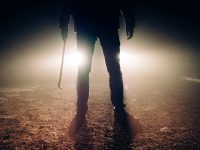Australia’s Worst Serial Killers: Who is the Most Evil?

Former New South Wales Greens MP Jeremy Buckingham told the media in October 2024 that the ‘worst’ serial killer in Australia’s history could be the person responsible for several of the 67 missing or murdered women in New South Wales between 1977 and 2009.
Many of the women were young travellers who went missing along the New South Wales coast around Burleigh Heads, Coffs Harbour, Mid North Coast, and Tweed Heads.
Supporting he former colleague, Greens MP Sue Higginson criticised the New South Wales Police Force over its inaction and complacency in relation to the cases, calling for greater resources to be invested.
In response, a police spokesperson expressed the view that they do not believe ‘a common offender was responsible for the disappearance.’
And while dozens of suspected murders remain unsolved, and the question of whether a serial killer is responsible for many of them remains unanswered, many of Australia’s worst serial killers have been arrested and charged with criminal offences over the years.
Australia’s worst serial killers
The worst serial killers in Australia’s history range from a sweet old lady who bumped her victims off using poisoned tea and treats, to hardened sociopaths who hid bodies in barrels after torturing their victims for days.
Their crimes have been immortalised in countless books and television shows, ensuring that future generations are haunted by their evil deeds.
Let’s take a look at seven of the Australia’s worst serial killers.
1. The ‘Bodies in the barrels murders’
John Bunting and Robert Wagner styled themselves as “vigilantes who took care of paedophiles”, although many of their victims were not child sex offenders at all.
Bunting appears to be the ringleader who enjoyed torturing his victims before killing them. The men played music, laughed and joked while using various implements of torture including an electric shock machine, pliers, sparklers, syringes, hammers, hand and thumb-cuffs, cigarettes and garrottes.
Eight dismembered bodies were found stuffed into six barrels in an unused bank vault, although these were not the pair’s only victims. More bodies were found buried and another hanging from a tree.
After the bodies were found, the tourism industry unashamedly began cashing in, printing magnets and other distasteful souvenirs with slogans such as “Snowtown SA; you’ll have a barrel of fun.”
During the trials, the jury was shown a poem written by Robert Wagner – the concluding line of which was “you know I’m not a bad guy for a serial killer.”
The two men were sentenced in 2003 to life imprisonment without the possibility of parole.
2. ‘Aunty Thally’
Known as ‘Aunty Carrie’, Caroline Grills was a hospitable woman who frequently visited family and friends, often bringing with her cakes, biscuits and tea.
No one suspected that the short, dumpy woman with thick-rimmed glasses was actually poisoning relatives and family friends, mostly in-laws whom she wasn’t fond of.
‘Aunty Thally’, as she became known, attained her nickname because of the type of poison she used on her victims: thallium, used to poison rats. She was convicted of four murders and one attempted murder.
Although originally sentenced to death, ‘Aunty Thally’s’ sentence was later commuted to life imprisonment, and she died in 1960.
3. The ‘Granny-killer’
John Wayne Glover was notorious for bumping off old elderly women in Sydney’s leafy North Shore.
He lived a seemingly respectable life with his wife and daughters in Mosman – but Glover had a dark side. He would befriend elderly ladies, all but one of whom used walking-sticks, and struck with punctuality: attacking his victims on weekdays strictly between the hours of 3 and 6pm.
Glover kept a claw hammer in his car, but his weapon of choice was a pair of pantyhose.
He often struck in broad daylight, after helping the women carry their shopping back to their homes.
In March 1990, Glover attacked again, but this time police were on to him. When he left the home of his sixth and final victim, police were already out the front, waiting to collect him.
He died in prison in 2005, after hanging himself in his cell.
4. The ‘Baby farmer’ murderers
It was Sydney, 1892, and John and Sarah Makin were struggling to make ends meet.
When John could no longer work after suffering an accident, the couple decided to earn money as ‘baby farmers’ – taking care of illegitimate or unwanted children, for a fee.
But instead of caring for the children, the pair instead took the money and callously murdered the babies. Some were in the backyards of the homes they lived in and others were stuffed drainpipes. Thirteen little bodies were discovered.
The Makins were tried for murder and John was hanged in 1893. Sarah was sentenced to penal servitude for life.
5. The ‘Backpacker murderer’
Two runners got the shock of their life after discovering human remains during a bushwalk in the Belanglo State Forest, located southwest of Sydney.
Another five bodies were unearthed and the discovery would become international news, warning tourists to be vigilant during their travels in Australia.
The victims were all young backpackers from England, Germany and Melbourne – whom the Australian-born son of a Yugoslav immigrant Ivan Milat picked up as hitch-hikers before driving them to isolated parts of the forest.
It appears that Milat took his time in doing away with the backpackers. He tied them up, before shooting, stabbing, beating or strangling them.
One UK hitch-hiker, Paul Onions, who narrowly escaped a similar fate years before, was instrumental in identifying Milat as the man behind the killings. Clothing and sleeping bags of the unfortunate backpackers were also linked back to Milat.
Milat is suspected of many more killings. But despite investigations into the disappearance of three more female backpackers, there was insufficient evidence to charge Milat.
To this day, Milat maintains his innocence to the charges, stating in a letter to his nephew: “I was framed by the police and now persecuted by the government.”
Despite being in prison, Milat is regularly performing stunts to get attention, or even, in the case of one hunger strike, to get a play-station to “exercise his mind”. In 2009, Milat hacked off one of his fingers with a plastic knife and addressed it to a judge as another bizarre form of protest.
He was sentenced to life imprisonment without the possibility of parole and currently resides in Goulburn’s Supermax Prison.
6. ‘The Mutilator’
William MacDonald was one of the first Australians to be given the title of ‘serial killer’ and the nature of his crimes were so gruesome that at trial, some jurors fainted while hearing about them.
In the early 1960s, MacDonald selected male victims from Sydney and Brisbane’s inner-city regions and lured them to parks or other dark places.
Once there, MacDonald would stab them and slice off their genitals. In one case he threw the severed genitals into Sydney Harbour; in another, he put them in a plastic bag and carried them away with him.
Although Macdonald fled to Melbourne, he was apprehended by police and he confessed his crimes, stating that he was filled with an irresistible urge to kill after being raped as a teen.
MacDonald was found to be insane at the time he committed the murders, but was later deemed sane enough to leave prison.
Interestingly, he declined to do so, terrified of the outside world that he had once terrorised himself.
Australia’s oldest and longest-serving prisoner, MacDonald died in prison earlier this year, aged 90.
7. The ‘Rockhampton Rapist’
Leonard Fraser had a lengthy history of assaulting women even before arriving in Rockhampton, North Queensland.
Upon arrival, one of the first things Fraser did was to wave down a police car and announce “My name is Leonard Fraser… what are the women like in this place?”
Police were astounded when they got back to the station and searched Fraser’s name.
Before commencing his killing career, Leonard Fraser had spent multiple periods of time in prison, totalling over 20 years, for offences including sexual assaults.
After being released in 1997, Fraser didn’t stop at sexual assault: his usual modus operandi (or method of killing) was to strangle woman with her own underwear and stash their bodies in local bushland or, in the case of one victim, in an abandoned Rockhampton Hotel.
But just three days after stashing the body in a hotel, Fraser learnt the news that threatened to incriminate him: there were plans to demolish building.
Afraid of the looming discovery, Fraser allegedly returned to the hotel, retrieved the body and drove it away in his car – leaving tell-tale blood stains.
Undeterred by the close call, Fraser was back to his deadly attacks the very next day, this time preying on a nine-year-old schoolgirl as she walked past a vacant lot on her way home one afternoon. He hit her on the back of the head, fracturing her skull, then left the scene and came back in his car the pick it up. He was apprehended by police shortly thereafter.
Police also found pony-tails of three women in his possession – none of which have ever been identified.
In prison awaiting trial, Fraser made a last-ditch attempt at freedom by creating a character named ‘Squeaky’ who was ostensibly responsible for the murders. Urged on by a fellow inmate in league with the police, Fraser ‘persuaded’ Squeaky to reveal the details of the murder that only the killer could have known. He died in prison in 2007 from a heart attack.
Most evil?
These are seven of Australia’s worst several killers, but without knowing the incomprehensible experiences of the innocent victims or the life-long effects on their loved-ones, it is perhaps impossible and inappropriate to describe any one of them as the most evil.






